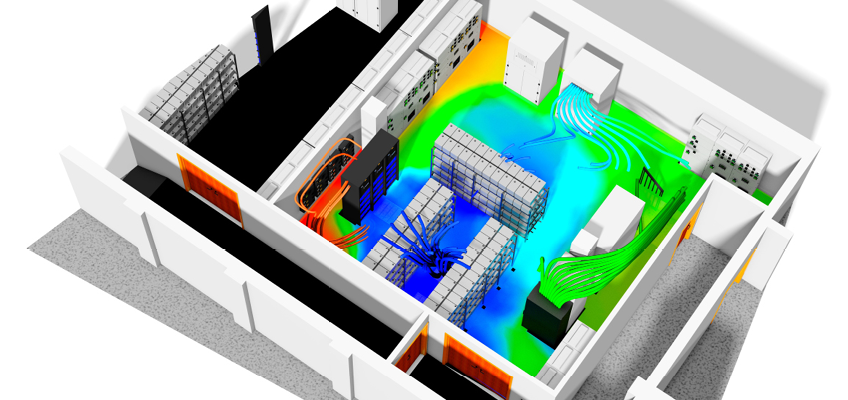CFD is Changing the Way we Design Data Centres
Students dabble in Computational Fluid Dynamics (CFD) at university and Engineers come across it in passing, but how is this thermal modelling technique used within Data Centre design? CFD is a numerical method that has been influencing the design process throughout the engineering discipline and gaining increasing exposure in recent years.
With the advancement of Building Information Modelling (BIM) and the concurrent progression that it brings to the industry, CFD has become more prominent within the Data Centre design process. The accuracy and availability that BIM brings to all parties involved, means that CFD takes up a role alongside it in driving the critical infrastructure industry forward.
CFD allows quantitative assessments to be made about the potential energy consumption and efficiency of facilities prior to construction. This level of scrutiny allows clients to gain an operational understanding of the facility at the concept stage and determine the optimal parameters that their facility will operate with.
With exposure about the effects of climate change becoming more prevalent across industrial applications, it is down to Engineers to implement energy saving solutions to drive the adoption of lower energy alternative technologies. This is a key driver for the increased implementation of CFD to the design process.
Data Centre Dynamics magazine predicts that by 2025, Data Centres will consume up to 20% of the global electricity supply. Due to this forecast, it is logical to widen the application of CFD into all areas of Data Centre design, to smooth out all inefficiencies present within the design process. It is imperative to mitigate potential issues at the preliminary stages to produce efficient solutions which operate at a low Power Usage Effectiveness (PUE), in order to future proof facilities.
Through simulating Data Centres and modelling their cooling systems, CFD allows intricate decisions to be made regarding system settings and equipment placement, with all of this being determined long before construction begins. This allows a much more efficient use of resource during the installation phases and moves a greater proportion of the detailed decision making earlier in the design process.

With customers approaching Sudlows to audit and analyse the operating conditions of their Data Centres, the CFD department play a key role in conducting this analysis. This capability extends to running control system optimisation, automated algorithm implementation and strategic planning in live facilities, with new functionality being continuously developed.
CFD has an ever growing presence within the design process, and will continue to increase with the adoption of new modelling techniques and greater exposure within the industry. Climate directives may also have an impact upon the adoption of CFD under the growing pressure to reduce the world energy demand across the industrial sector, and the unparalleled insight CFD simulations provide.











